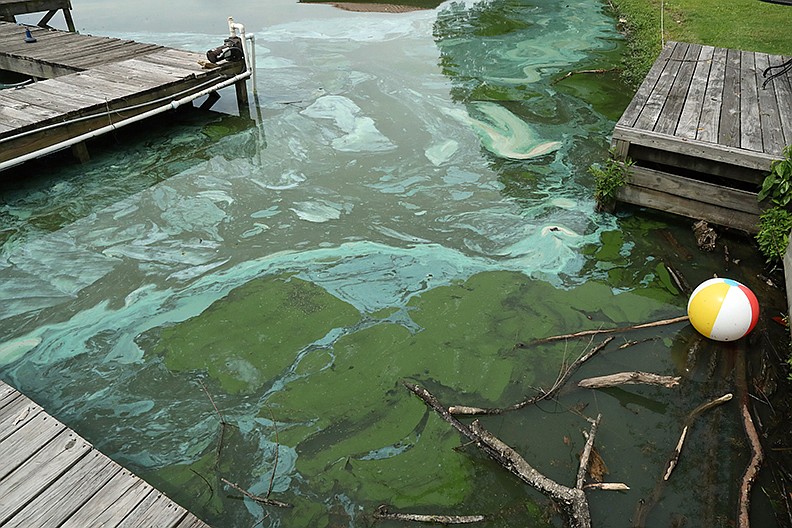While the hazardous algae bloom found in the Little Mazarn area of Lake Hamilton is not uncommon for developed lakes, the Arkansas Department of Environmental Quality says it has been monitoring its size daily.
Entergy, which owns the dams that form Lake Hamilton and the land under the lake, and ADEQ, which regulates the water quality in the lake, in addition to other agencies, are working together to post signage and spread the word via social media for people to steer clear of this blue/green algae outbreak, Entergy Lakes Manager Kimberly Bogart said.
According to an ADEQ advisory posted on Entergy's Lake Hamilton & Lake Catherine Community Facebook Page, in regard to the area, until further notice:
• Use caution when contacting lake water and wash with clean water afterward.
• May pose a higher risk to infants and small children.
• Avoid areas of algae accumulation.
• Do not eat dried algae or drink untreated water.
• Keep pets and livestock away from water.
• Do not let pets or livestock eat dried algae or drink untreated lake water.
• Clean fish well and discard guts.
Jacob Harper, ADEQ's media and marketing manager, said in an email DEQ was on the lake last Saturday, Sunday, Monday and Wednesday monitoring the size of the bloom.
"DEQ has also been getting daily reports from lake residents in the area," Harper said. "DEQ will continue monitoring the size of the HAB as well as toxin concentrations."
DEQ is continuing to both monitor the situation and relay the latest information to the public and media as they get it, he added.
"This includes advisories, press releases and notifications on social media," Harper said. "Additionally, signs have been posted around the lake to inform citizens of the advisory in effect."
According to lab results, quantitative tests demonstrated that microcystins toxin concentrations on Wednesday ranged from 8 to 50 parts per billion in the bloom, above the EPA human health recreation advisory level of 8 ppb.
When it comes to taking action in this outbreak, Harper said chemical treatments are typically "indiscriminant" in what organisms they kill, and can produce chemical byproducts, which can be harmful.
"Physical controls are generally used on smaller scales with little knowledge of effectiveness or require specialized equipment that would not be available for use," he said. "Also, cyanobacteria can release toxins when they die as the cells begin to break down."
Harper told The Sentinel-Record on Wednesday that it is difficult to determine the length of a HAB; some may remain for a day or two, while others may last for several weeks.
"The next major rain event could flush the HAB out into the main water body and dilute it, but it could also bring in more nutrients from the surrounding watershed," he said.
Although no negative reports from HAB have been reported to DEQ, Harper said if someone feels they may have been affected and come down with any of the following symptoms, they should alert their doctor immediately and describe where and when the exposure happened:
• Headaches.
• Weakness.
• Shortness of breath.
• Vomiting.
• Diarrhea.
• Liver damage.
• Kidney damage.
• Abdominal pain.
Bogart said there will be updates posted to Entergy's Lake Hamilton & Lake Catherine Community Facebook Page, if available.
